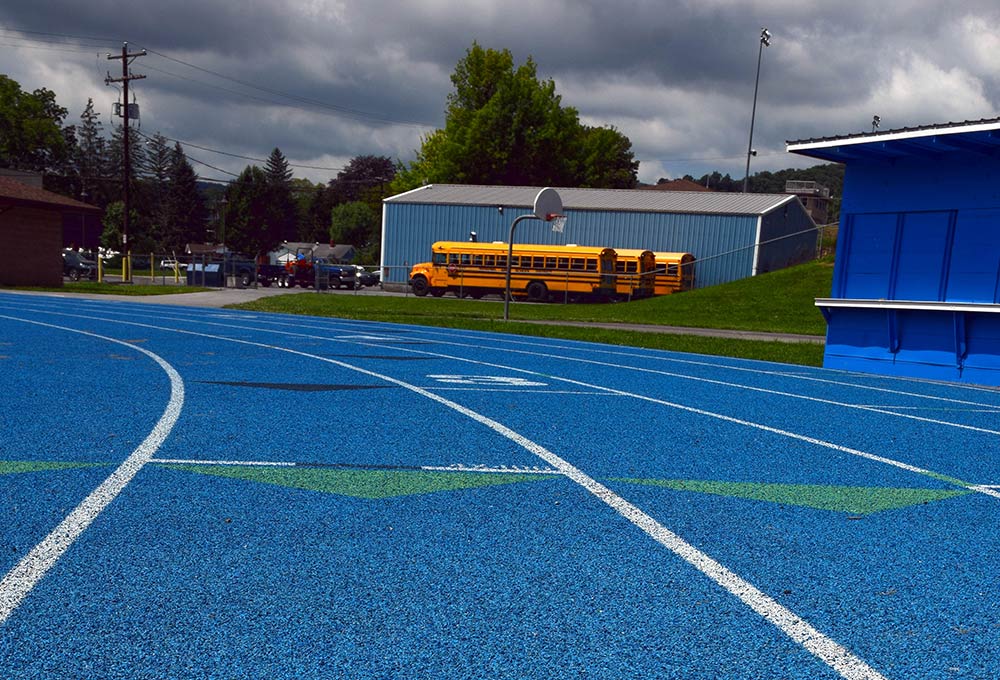Building a track is so much more than dropping some rubber and painting in the lanes. It’s a careful, multi-faceted process involving skilled craftsmen, careful measurements and incredible attention to detail. It’s a process ATT Sports crews have perfected over decades of combined experience, and one that’s overseen by a Certified Track Builder, recognized by the American Sports Builders Association.
Building any track starts well below what people will run on. A solid asphalt subbase is imperative. It must be flat, seamless and within strict tolerances in terms of slope.
With a solid asphalt base laid out and cured, a track builder can now pave the base mat for spray and sandwich systems. This is done by specialized machines (we use SMG) and requires great focus to ensure a uniform application.
With a sealed mat and spray or sandwich system, the base mat is then “sealed” with a mixture of rubber dust and liquid polyurethane. This creates an impermeable top to the base mat.
After carefully covering fences, bleachers and artificial turf surfaces, a sprayed surface can now be applied. This is a mixture of fine “spray rubber” and liquid polyurethane, applied carefully by trained professionals to ensure an even covering.
For a sandwich system, liquid polyurethane is poured out and raked into place. Rubber granules are thrown into the liquid and left to cure. Once cured, the excess granules are collected, or “reclaimed,” leaving a beautiful textured surface, ready for running.
For full pour systems, like the Advanced Polymer Technology R10, G10, G13 and M99, there is no paved base mat, but a layer of polyurethane or gel and rubber as a base. The state-of-the-art M99 system then uses a foaming layer to increase performance. All full-pour systems then receive the same wearing course as a traditional sandwich with poured polyurethane and broadcast granules.
Now for the painting. Track striping is a specialized skill, requiring great precision, knowledge, attention to detail, and all those geometry lessons most of us have forgotten by now. A striper paints the lines, relay zones, numbers, hurdle marks, and everything that allows for meets to go smoothly and runners to know exactly what they’re doing.
When it’s all done, you have a running track for people to enjoy for years to come! But don’t forget to maintain and care for your new track!




